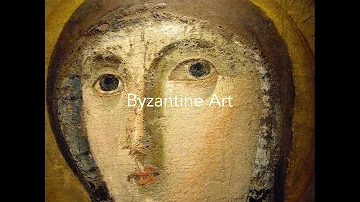
What characterizes Byzantine art?

What characterizes Byzantine art?
Byzantine art (4th – 15th century CE) is generally characterised by a move away from the naturalism of the Classical tradition towards the more abstract and universal, there is a definite preference for two-dimensional representations, and those artworks which contain a religious message predominate.
What is the principle of Byzantine?
Byzantine architects were eclectic, at first drawing heavily on Roman temple features. Their combination of the basilica and symmetrical central-plan (circular or polygonal) religious structures resulted in the characteristic Byzantine Greek-cross-plan church, with a square central mass and four arms of equal length.
What do you think are the most significant qualities of Byzantine art?
Byzantine art preferred stylized imagery over naturalistic depictions. The aim of their art was to inspire a sense of wonder and admiration for the church. In this way, their use of graceful, floating figures, and golden tesserae emphasized the otherworldliness of the religious subjects.
What is Byzantine art focus?
The eastern provinces of the Eastern Roman and later the Byzantine Empires inherited a strong artistic tradition from the Late Antiquity. Christian mosaic art flourished in this area from the 4th century onwards. The tradition of making mosaics was carried on in the Umayyad era until the end of the 8th century.
What did Byzantine art focus on?
Byzantine art is almost entirely concerned with religious expression and, more specifically, with the impersonal translation of carefully controlled church theology into artistic terms.
What are some examples of Byzantine art?
10 Most Famous Byzantine Art
- Madonna and Child by Duccio di Buoninsegna. Madonna and Child by Duccio di Buoninsegna. …
- Maestà by Duccio di Buoninsegna. Maestà by Duccio di Buoninsegna. …
- Pala d’Oro by Doge Pietro Orseolo. …
- Crucifix. …
- Theotokos of Vladimir. …
- Gero Cross. …
- Barberini ivory. …
- Harbaville Triptych.
What symbolism was evident in the Byzantine art?
One of the most important genres of Byzantine art was the icon, an image of Christ, the Virgin, or a saint, used as an object of veneration in Orthodox churches and private homes alike.
What was Byzantine art strongly influenced by?
Just as the Byzantine empire represented the political continuation of the Roman Empire, Byzantine art developed out of the art of the Roman empire, which was itself profoundly influenced by ancient Greek art.
Who created byzantine art?
Emperor Justinian
The flowering of Byzantine architecture and art occurred in the reign of the Emperor Justinian from 527-565, as he embarked on a building campaign in Constantinople and, subsequently, Ravenna, Italy.
What is the form of Byzantine painting?
The mature Byzantine style, evolved through the stylization and standardization of late Classical forms of Early Christian art, was based on the dynamic of lines and flat areas of colour rather than form.
What is Byzantine art?
- The byzantine art comes from the Byzantine Empire and it was the name of the products in this Empire. The Byzantine Empire emerged when Rome Empire declined. Madonna and Child is a painting produced by Duccio di Buoninsegna in 1300.
What is icon painting in the Byzantine period?
- Early Byzantine artists pioneered icon painting, small panels depicting Christ, the Madonna, and other religious figures. Objects of both personal and public veneration, they developed from classical Greek and Roman portrait panels and were informed by the Christian tradition of Acheiropoieta.
How did the Byzantine period influence Anglo Saxon art?
- Byzantine art-focused heavily on religious themes, particularly applied in mosaics, Icon paintings (paintings of the saints on wood panel), and fresco wall paintings. This art movement ’s influence on later periods is seen in the Illuminations of Anglo Saxon monastic illustrations.
What are the best examples of early Byzantine innovation?
- While other structures, particularly his Chrysotriklinos, the imperial palace reception room, were equally influential, that building, like other early structures in Constantinople, was later destroyed. As a result, the best examples of Early Byzantine innovation can be seen in Ravenna, Italy.

